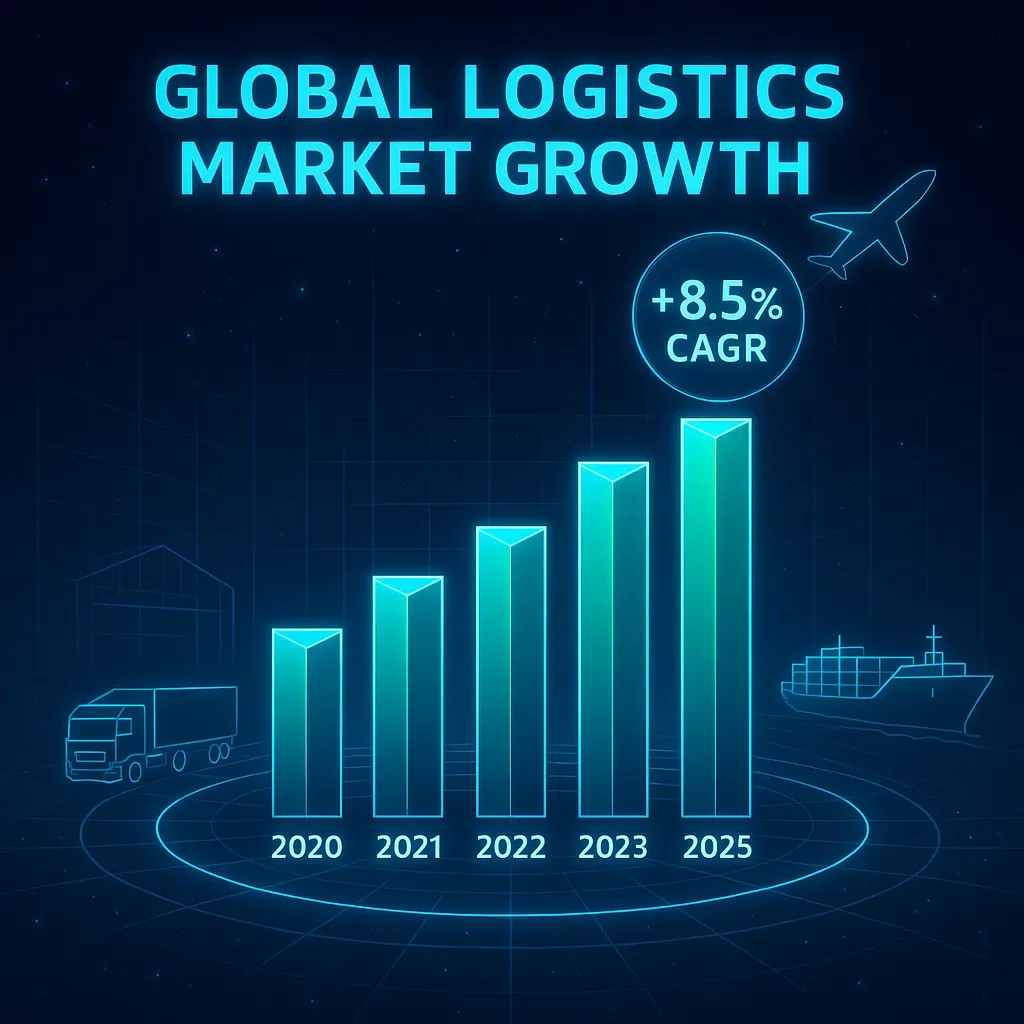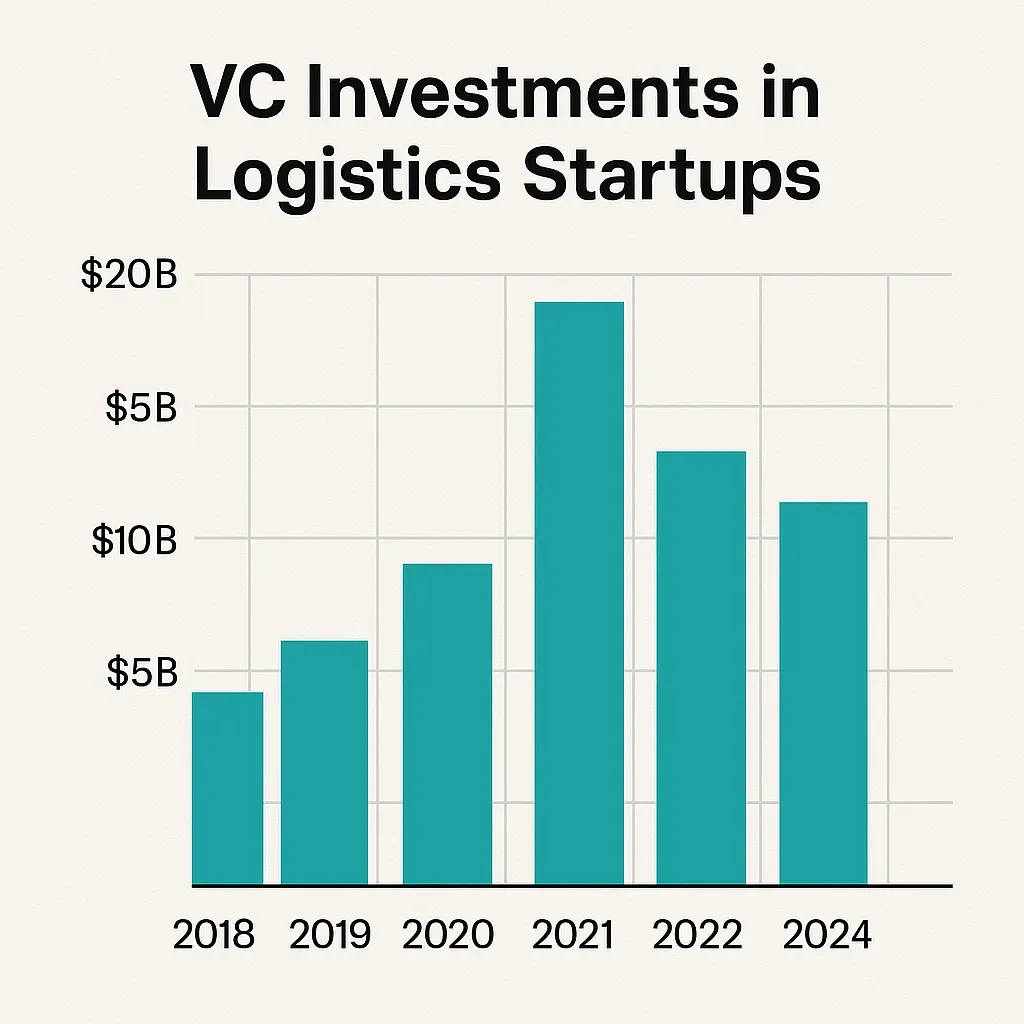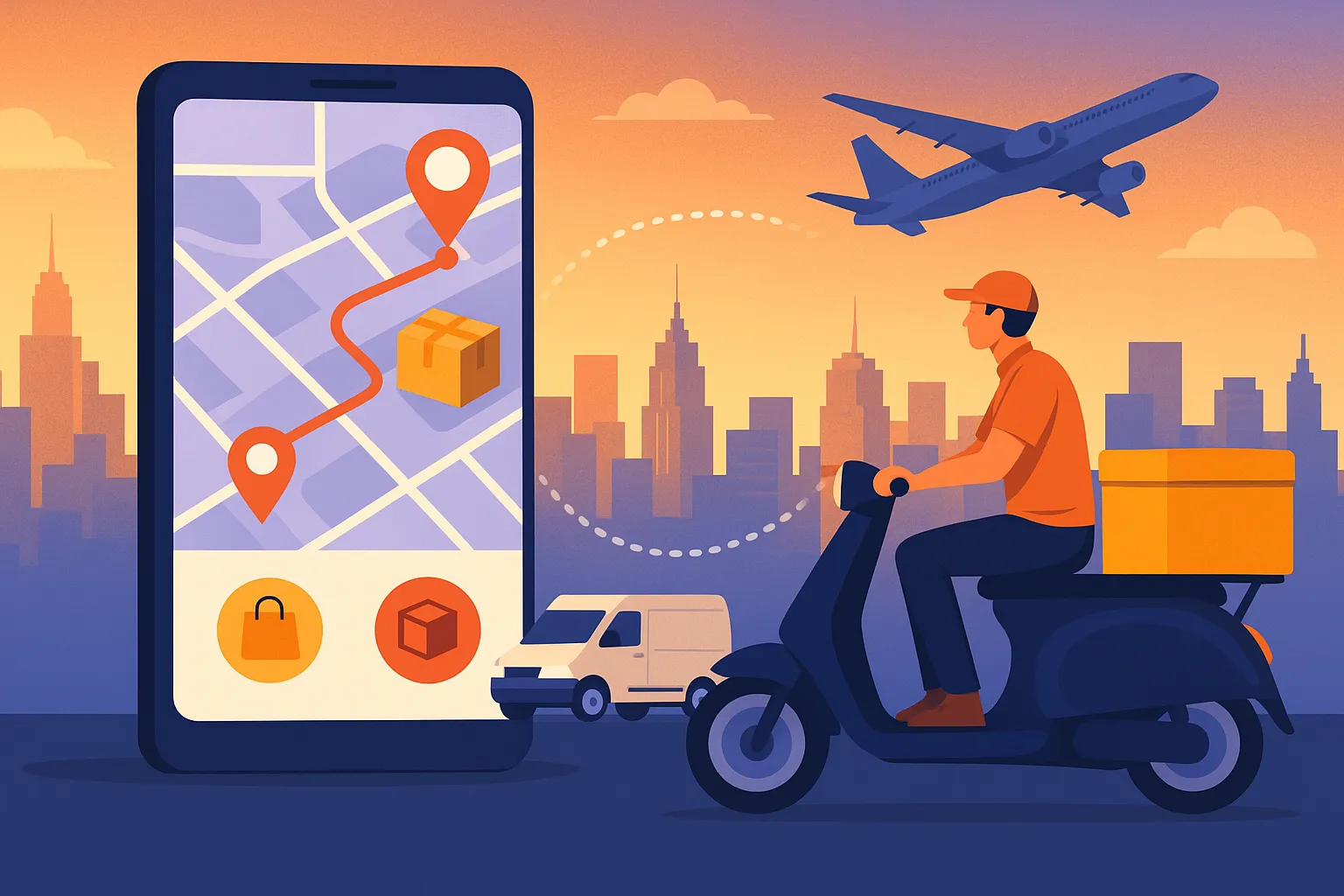The logistics and package delivery industry is on a fast track to innovation—and 2025 might just be the golden year for launching your own solution. If you’re a startup founder, digital agency, or aspiring tech entrepreneur, now is the time to explore high-return opportunities in this niche.
Thanks to a surge in eCommerce, rising consumer expectations for faster and more flexible deliveries, and advances in tech infrastructure (like AI and route optimization), logistics delivery apps are not just growing—they’re booming. What used to be the domain of big players like FedEx and DHL is now open to niche platforms, regional delivery apps, and on-demand logistics startups.

Why Logistics Delivery Apps Are a Hot Opportunity in 2025
The logistics tech market is riding a growth wave fueled by digital commerce, same-day delivery culture, and the explosive rise of on-demand services. According to Statista, the global courier, express, and parcel (CEP) market is projected to exceed $650 billion by 2026, with last-mile delivery alone accounting for a significant chunk of costs and innovation focus.
What’s more, funding for logistics startups is on the rise. CB Insights reports that venture capital investment in logistics tech topped $20 billion globally in the past year—proving that logistics is far from saturated. Consumer expectations are also shifting; they now demand real-time tracking, carbon-conscious deliveries, and contactless options.
Yet, many gaps remain—especially for hyperlocal deliveries, rural logistics, niche eCommerce partnerships, and green last-mile solutions. That’s where new startups can enter and thrive.

Top Profitable Logistics Delivery App Ideas to Launch in 2025
1. Hyperlocal On-Demand Courier App
A location-based delivery app focused on same-hour courier services within small city zones. Ideal for groceries, personal packages, and service documents. Hyperlocal apps empower local businesses and gig workers alike, ensuring fast fulfillment and flexible availability.
Monetization Strategy: Delivery charges, peak pricing, business partnerships
Why It Works in 2025: Urban congestion, gig economy, and increased demand for faster intra-city delivery make this a winner.
2. B2B Logistics Aggregator App
This app acts as a one-stop freight marketplace, letting businesses compare, book, and manage multiple courier and freight providers in real-time. It’s built to reduce logistics overhead for SMEs and unlock smarter, data-backed shipping decisions.
Monetization Strategy: Commission per booking, subscription for premium services
Why It Works in 2025: SMEs need a simplified way to handle logistics without traditional carriers’ pricing and delay hurdles.
3. Green Last-Mile Delivery App
A sustainability-first delivery platform using electric bikes, vans, or walking couriers for the last-mile segment. Perfect for urban centers under emissions regulations, it helps brands showcase eco-credibility while cutting delivery costs.
Monetization Strategy: Premium pricing, eco-brand partnerships, carbon credits
Why It Works in 2025: ESG regulations and urban emissions policies are pushing businesses to adopt greener delivery solutions.
4. Peer-to-Peer Package Delivery App
This app enables everyday travelers to carry and deliver packages for others along their route. It’s a decentralized, cost-effective alternative to traditional courier systems, ideal for non-urgent shipments and rural reach.
Monetization Strategy: Service fees, verified-user upgrades
Why It Works in 2025: Cost-effective, environment-friendly, and leverages underutilized travel space.
5. Cold Chain Logistics App
A specialized logistics platform for managing temperature-sensitive deliveries such as pharmaceuticals, perishables, and lab samples. With real-time temperature and route monitoring, it ensures safe, compliant deliveries across sectors.
Monetization Strategy: High-value B2B contracts, smart sensor data services
Why It Works in 2025: Healthcare and fresh food sectors are growing and need tightly controlled temperature-based deliveries.
6. E-Commerce Integrated Delivery App
A seamless logistics backend for small-to-medium online retailers, this app connects online orders directly to delivery networks. Merchants can automate dispatch, track deliveries, and offer better customer experience without high logistics spend.
Monetization Strategy: Subscription model, order-based commissions
Why It Works in 2025: Shopify-style sellers are scaling fast and need affordable, integrated shipping options.
What Makes an App Profitable in the Logistics Delivery Niche?
Profitable logistics apps often share several key traits:
- Recurring revenue streams through subscriptions, partnerships, or bulk booking
- High retention rates due to daily or weekly usage
- Low operational overhead thanks to gig workforce and third-party integrations
- Efficient user acquisition models like referral programs and business tie-ins
But profitability also comes from how you build the app. Starting from scratch is time-consuming and expensive. That’s why clone app development is increasingly popular—offering ready-made, white-label platforms that you can rebrand, customize, and launch quickly.
Miracuves, for instance, provides scalable clones of popular logistics platforms that cut both cost and time-to-market, while maintaining full flexibility for future updates.
Cost to Build a Logistics Delivery App in 2025
Creating a logistics delivery app from scratch in 2025 can range widely depending on the complexity:
- Basic MVP (single platform, limited features): $12,000 – $20,000
- Mid-tier (iOS + Android, live tracking, multi-language): $25,000 – $45,000
- Advanced (multi-warehouse, analytics, real-time optimization): $60,000+
Launch Your On-Demand Logistics Platform in Just 3–6 Days — Go Live with Miracuves from $2,500 to $3,000!
Factors that influence cost include:
- Number of platforms (Android, iOS, Web)
- Backend complexity (multi-vendor, tracking, APIs)
- Real-time features (GPS, notifications)
- Admin dashboards and third-party integrations
Instead of reinventing the wheel, consider using clone solutions. Miracuves offers clones of successful delivery platforms like Dunzo Clone and Postmates Clone, cutting dev time by 60% and costs by 40%.
Tips for Founders to Launch a Successful Logistics Delivery App
- Start with an MVP: Don’t build a mega-platform on day one. Validate your core feature set in one city or one vertical first.
- Focus on UI/UX: Logistics apps need clean, fast interfaces for both users and agents. Confusion means churn.
- Validate Before Launch: Do a soft launch, collect real feedback, and adjust based on data.
- Plan for Scale: Choose a backend that supports traffic spikes and future integrations.
- Invest in Marketing: Local SEO, referral programs, and B2B outreach can give you traction early on.
Conclusion
In a world that runs on convenience, logistics and package delivery apps are becoming indispensable. From hyperlocal deliveries to green logistics and peer-to-peer models, the opportunities in 2025 are abundant, diverse, and highly profitable. Whether you’re eyeing small-town startups or city-wide domination, now is the moment to move.
And the smartest way to act? Don’t build from scratch—scale smarter with white-label clone solutions. With Miracuves, you can tap into pre-built delivery app templates, customize them for your niche, and get to market faster—without compromising on quality or scalability.
At Miracuves, we help innovators launch high-performance app clones that are fast, scalable, and monetization-ready. Ready to turn your idea into reality? Let’s build together.
FAQs
Q:1 How much does it cost to build a logistics delivery app in 2025?
The cost to build a logistics delivery app in 2025 with Miracuves ranges from $2,500 to $3,000, with a full Go-Live setup in just 3–6 days.
Q:2 What features should a successful logistics delivery app include?
Live tracking, multi-stop routing, real-time notifications, payment integration, and feedback systems are essential.
Q:3 Is it better to build a logistics app from scratch or use a clone solution?
Clone solutions save significant time and cost, making them ideal for startups focused on rapid go-to-market.
Q:4 How can I monetize my logistics delivery app?
Use models like delivery fees, business subscriptions, and surge pricing.
Q:5 Can I customize a logistics clone app to fit my brand?
Yes, clone solutions from providers like Miracuves are fully white-label and customizable.
Q:6 How fast can I launch a logistics app using a clone solution?
With the right clone, you can launch in as little as 2–4 weeks, depending on customization needs.
Related Articles:








